 [I]t was long ago when I first ran across a recipe for “Welsh rarebit†or “Welsh rabbit,†as it is sometimes called. As a girl who studied cookbooks, I couldn’t have been that old, but I was certainly intrigued and excited by a melty cheese sauce dish that was named for — but contained not a morsel of — my favorite animal.
[I]t was long ago when I first ran across a recipe for “Welsh rarebit†or “Welsh rabbit,†as it is sometimes called. As a girl who studied cookbooks, I couldn’t have been that old, but I was certainly intrigued and excited by a melty cheese sauce dish that was named for — but contained not a morsel of — my favorite animal.
 Oddly enough, even though I thought of the dish from time to time over the years — usually during Easter season when my thoughts are even more rabbit-minded — I never made it, or even ate it. How could this be? From my first studying of the simple cheesy sauce (to be served over toast or crackers) in my mother’s 1955 “Betty Crocker’s Picture Cook Book,†I knew it would probably not be hard to make and most certainly would be delicious. It had historic beginnings (first noted in the 1700s) and even literary leanings (supposedly Charles Dickens ate the dish, the specialty of the house, at England’s Ye Olde Cheshire Inn)).
Oddly enough, even though I thought of the dish from time to time over the years — usually during Easter season when my thoughts are even more rabbit-minded — I never made it, or even ate it. How could this be? From my first studying of the simple cheesy sauce (to be served over toast or crackers) in my mother’s 1955 “Betty Crocker’s Picture Cook Book,†I knew it would probably not be hard to make and most certainly would be delicious. It had historic beginnings (first noted in the 1700s) and even literary leanings (supposedly Charles Dickens ate the dish, the specialty of the house, at England’s Ye Olde Cheshire Inn)).
Its name was inspired by the hunt, or lack thereof. As a substitute for the rabbit that eluded hunters and did not come home to the kitchen, this sturdy, rich “peasant†dish was created and given the rabbit title, anyway. Its popularity has had staying power, from a renaissance of recipes and on menus in the 1950s and ‘60s to today, where Welsh rarebit recipes pop up everywhere, especially in spring.
 One could say this old-time dish — somewhat a ratcheting up of a grilled cheese, with that cheese more of a sauce and the sandwich served open-face — falls under the classification of “pub grub,†hearty, simple fare easily served up to the patrons in need of sustenance at inns, bars and taverns. The recipe, in fact, often calls for beer (stout, porter or ale) or something fizzy (the recipe in the old Betty Crocker book suggests ginger ale), to complement the rich cheese and tangy mustard key to a proper rarebit.
One could say this old-time dish — somewhat a ratcheting up of a grilled cheese, with that cheese more of a sauce and the sandwich served open-face — falls under the classification of “pub grub,†hearty, simple fare easily served up to the patrons in need of sustenance at inns, bars and taverns. The recipe, in fact, often calls for beer (stout, porter or ale) or something fizzy (the recipe in the old Betty Crocker book suggests ginger ale), to complement the rich cheese and tangy mustard key to a proper rarebit.
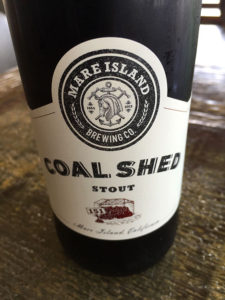 I looked at all sorts of methods for Welsh rarebit, those using everything from all beer to no beer to parts beyond (for example, a “blushing bunny†uses tomato juice). The one I liked most, offered by Food Network’s Alton Brown, who always seems geared to do things right, proper and as close to tradition as possible, used both cream and beer.
I looked at all sorts of methods for Welsh rarebit, those using everything from all beer to no beer to parts beyond (for example, a “blushing bunny†uses tomato juice). The one I liked most, offered by Food Network’s Alton Brown, who always seems geared to do things right, proper and as close to tradition as possible, used both cream and beer.
To beer or not to beer…as many know, AWS has cooked with alcohol, but does not often purchase it and never drinks it these days. I considered the history of the dish and decided I would buy a proper ale to make it properly, following tradition. So I began gathering ingredients. At my local grocer, I scanned the beers and discovered it would not be possible to buy a single bottle.
Of course! The answer was to buy one from Mare Island Brewing, Co., founded by my neighbor and fellow Kansan, Kent Fortner, who is a winecrafter as well (for more about him, see www.road31.com).
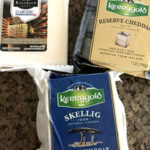 I purchased the Coal Shed Stout, a brew as dark as its namesake that seemed to carry an aromatic depth of sweet/smoky coffee beans. Its richness would seemingly work well with the spicy mustard and blend of cheeses I selected.
I purchased the Coal Shed Stout, a brew as dark as its namesake that seemed to carry an aromatic depth of sweet/smoky coffee beans. Its richness would seemingly work well with the spicy mustard and blend of cheeses I selected.
Around St. Patrick’s Day, I had picked up a couple of Irish cheddars — one sharp and one sweet. I also got some Swiss Gruyere, the king of all melty dish cheeses, to add that nutty flavor that has become my favorite.
The Welsh rarebit sauce itself comes together easily and quickly. Think gravy-meets-cheese, in a layering of flavor upon flavor. After butter and flour are first whisked and cooked a bit, mustard, Worcestershire sauce and salt and pepper are added. Then the dark stout for a deglazing. Cream adds a richness, but lightens the sauce, too.
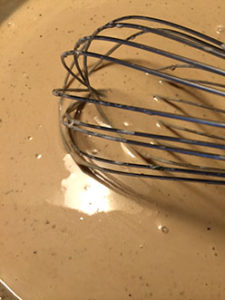
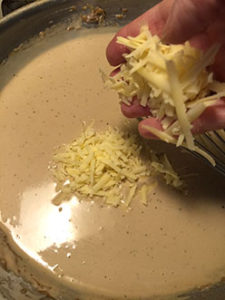 Then, sprinkle after sprinkle of the flavorful cheese, whisking it to melt smoothly in after each addition. The sauce really looked like a rich gravy, a soft pale tan in color. I could not resist dipping a finger in. Sweet, tangy, creamy…so many levels of flavor and history. The beer was just a slightly bitter bottom note that gave the sauce a little intrigue.
Then, sprinkle after sprinkle of the flavorful cheese, whisking it to melt smoothly in after each addition. The sauce really looked like a rich gravy, a soft pale tan in color. I could not resist dipping a finger in. Sweet, tangy, creamy…so many levels of flavor and history. The beer was just a slightly bitter bottom note that gave the sauce a little intrigue.
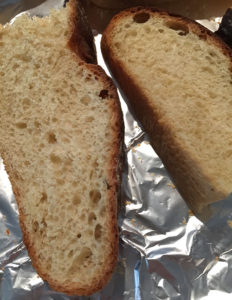 I toasted slices of my homemade Country Loaf (see previous blog entry of 3/17), which seemed the perfect sturdy bread for blanketing with sauce.
I toasted slices of my homemade Country Loaf (see previous blog entry of 3/17), which seemed the perfect sturdy bread for blanketing with sauce.
Served with a salad, this was a perfect spring Sunday supper. It would work for brunch, too. As I slathered the sauce on my bread, I thought its richness would keep me at one serving. Then I thought, this rare rarebit was a long time coming — so I helped myself to two.
Welsh Rarebit
Recipe from Alton Brown (www.foodnetwork.com)
Serves 2 to 4
2 tablespoons unsalted butter
2 tablespoons all-purpose flour
1 teaspoon Dijon mustard
1 teaspoon Worcestershire sauce
1/2 teaspoon kosher salt
1/2 teaspoon freshly ground black pepper
1/2 cup porter beer
3/4 cup heavy cream
6 ounces (approximately 1 1/2 cups) shredded Cheddar
2 drops hot sauce
4 slices toasted rye bread
In a medium saucepan over low heat, melt the butter and whisk in the flour. Cook, whisking constantly for 2 to 3 minutes, being careful not to brown the flour. Whisk in mustard, Worcestershire sauce, salt, and pepper until smooth. Add beer and whisk to combine. Pour in cream and whisk until well combined and smooth. Gradually add cheese, stirring constantly, until cheese melts and sauce is smooth; this will take 4 to 5 minutes. Add hot sauce. Pour over toast and serve immediately.
Blogger’s Note: As mentioned above, I used a stout beer, a blend of cheddar and Swiss cheeses and toasted rustic white bread.